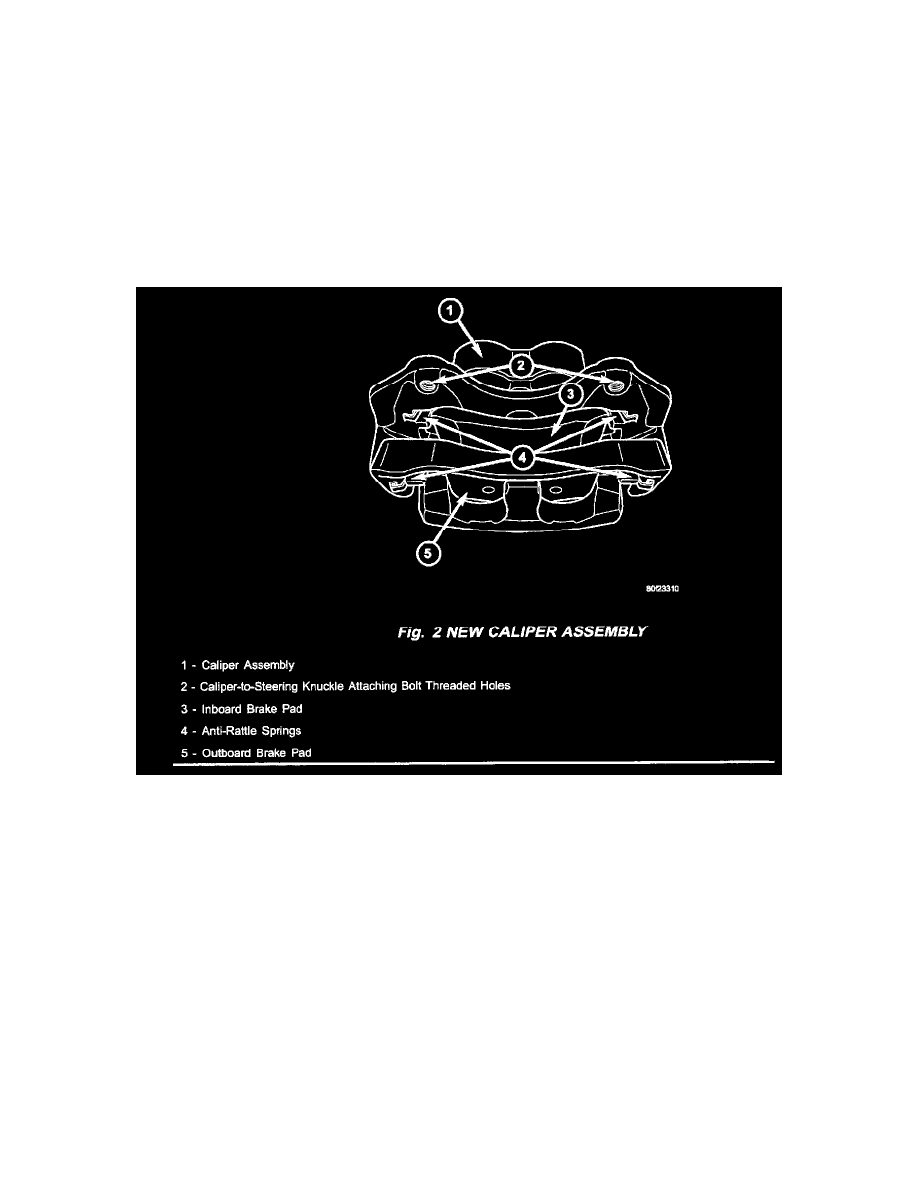Grand Cherokee 2WD Limited V8-4.7L (2002)

8.
Thoroughly clean the surface of the wheel hub/bearing assembly where it mates to the brake rotor. The hub surface must be free of corrosion and
dirt so that the new brake rotor rests flush against the hub. This important step will prevent excess rotor lateral runout (Fig. 1).
9.
Inspect the new brake rotor and its mating surface with the hub/bearing assembly. Install the new brake rotor to the hub/bearing assembly.
10.
Using a dial indicator, match mount the brake rotor to the hub/bearing assembly until the minimum lateral runout for the new brake rotor and
hub/bearing assembly combination is obtained. This important step will prevent excess rotor runout.
NOTE:
USE A DIAL INDICATOR TO INSURE THAT MINIMUM LATERAL RUNOUT IS ACHIEVED FOR EACH ROTOR.
11.
Verify that the maximum allowable lateral runout of the brake rotor and hub/bearing assembly combination does not exceed 0.025 mm (0.001 in.).
If the lateral runout is in excess of specification then the cause must be determined and corrected before proceeding further with this repair.
12.
Inspect the new caliper. Each caliper has a letter "L" or "R" to denote left side or right side of vehicle respectively. Be careful not to dislodge the
caliper brake pads and anti-rattle springs when handling the caliper. Remove shipping packing (Fig. 2).
13.
Install the new caliper assembly to a clean steering knuckle mating surface.
